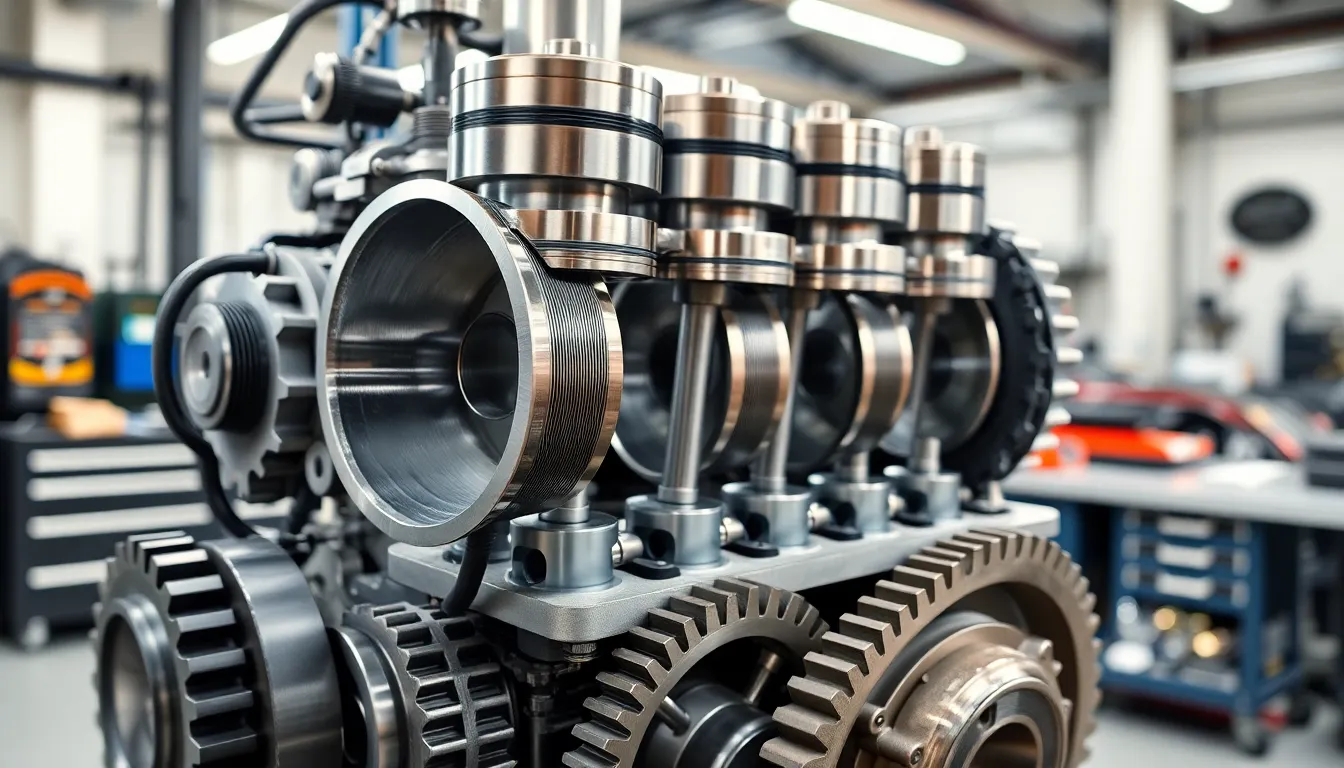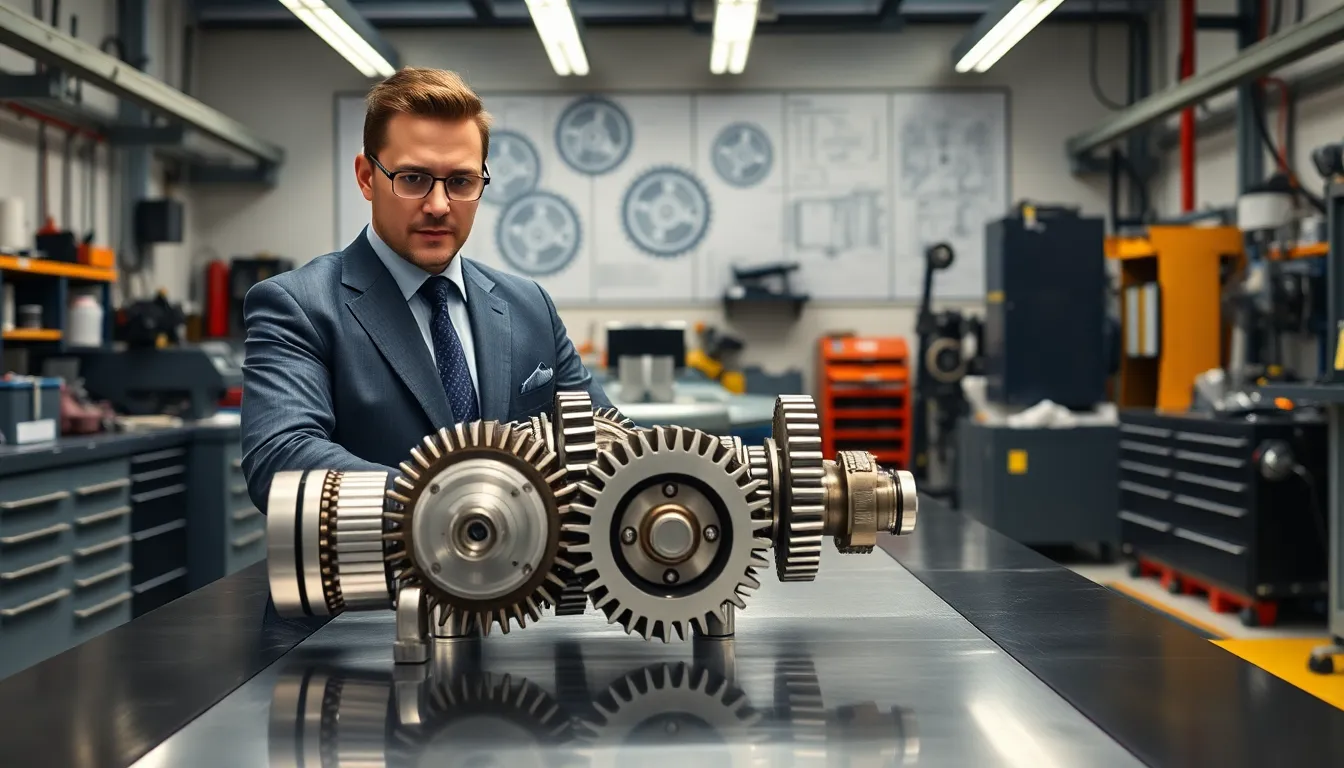Table of Contents
ToggleImagine firing up your engine and feeling that rush of power. It’s not just magic, it’s all about pistons gear working in perfect harmony. This intricate system plays a crucial role in making those dreams of speed and efficiency a reality. If you’re curious about how this setup functions, how it affects your ride, or why it’s essential in various applications, you’re in the right place. Buckle up. We’re about to jump into the world of pistons gear with enough clarity and confidence to make even your mechanic nod in approval.
Understanding Pistons Gear

What Are Pistons?
Pistons are cylindrical components that play a pivotal role in internal combustion engines. Picture them as the heart of the engine, pumping up and down within the cylinder. Each move they make generates force through combustion, converting fuel into mechanical energy. These little powerhouses are engineered to withstand high temperatures and pressures, ensuring they function effectively over time.
The Role of Gear in Pistons Gear Systems
Gear is the unsung hero in the pistons gear system. It transmits power and changes the speed and torque generated by the engine. Think of gears as the connectors that adjust the engine’s output to suit various driving conditions. They allow the engine to perform efficiently, whether you’re cruising down the highway or tackling a steep hill. Together, pistons and gears create a symbiotic relationship that optimizes performance while providing the needed control.
Types of Pistons Gears
Many types of gears work alongside pistons, each designed for specific applications. Here are some of the most common:
- Spur Gears: Simple and effective, spur gears are the go-to option for applications requiring power transmission. They operate on parallel shafts and are easy to manufacture.
- Helical Gears: These gears feature angled teeth, which result in smoother and quieter operation compared to spur gears. Helical gears are typically found in more advanced systems.
- Bevel Gears: Bevel gears are used when the input and output shafts need to be at an angle, commonly at 90 degrees. They’re crucial in connecting different parts of an engine.
- Worm Gears: Worm gears provide high reductions in speed and increased torque, making them ideal for heavy machinery applications. They shine in scenarios demanding lower speeds with increased force.
- Planetary Gears: Often seen in automatic transmissions, they consist of a central sun gear, planet gears, and a ring gear, allowing for compact setups that deliver varying gear ratios.
Common Materials Used in Pistons Gear Manufacturing
The durability and performance of pistons gears heavily depend on the materials used during their manufacturing. Here are some common materials:
How Pistons Gear Works in Different Engines
- Aluminum: Lightweight and resistant to high temperatures, aluminum is frequently used for manufacturing pistons. This material helps enhance fuel efficiency in vehicles.
- Cast Iron: Known for its strength and wear resistance, cast iron is another choice for gears. It’s especially prevalent in environments where heavy loads are common.
- Steel: Steel provides an excellent balance of strength and weight, making it a popular choice for high-performance applications. It helps in maintaining durability while allowing efficient power transmission.
The Relationship Between Pistons and Gear Ratios
Gear ratios influence how efficiently pistons operate within an engine. A low gear ratio allows for better torque, essential during start-up or heavy load conditions. Conversely, a high gear ratio enhances speed and helps maintain performance at higher speeds. Understanding these relationships is vital for tuning engines to meet specific performance metrics.
Applications of Pistons Gear
Pistons gear systems have broad applications across various industries:
- Automotive Industry: In vehicles, they optimize performance, enhance fuel efficiency, and improve acceleration.
- Aerospace Engineering: Aircraft use advanced pistons gear systems for controlling mechanisms like landing gear and flaps.
- Heavy Machinery: Excavators and industrial equipment rely on robust pistons gear setups to handle immense loads and maintain functionality under pressure.
- Motorcycles: The efficiency of pistons gear systems plays a crucial role in how motorcycles perform, especially about torque and speed management.
Advancements in Pistons Gear Technology
The field of pistons gear technology is evolving rapidly. Current advancements include:
- Smart Sensors: Modern gears are equipped with smart sensors that monitor performance metrics in real time, leading to superior diagnostics and maintenance schedules.
- 3D Printing: This technology allows for more precise manufacturing of custom gears tailored for specific applications, making production faster and more efficient.
- Hybrid Materials: Combining materials like polymers with metals leads to gears that are lightweight yet strong, reducing the overall weight of machinery without sacrificing durability.
- AI-Driven Design: Artificial Intelligence is now playing a role in the design of pistons gears, optimizing their shapes and materials for better performance. This ensures the gears are not only effective but also cost-efficient.







